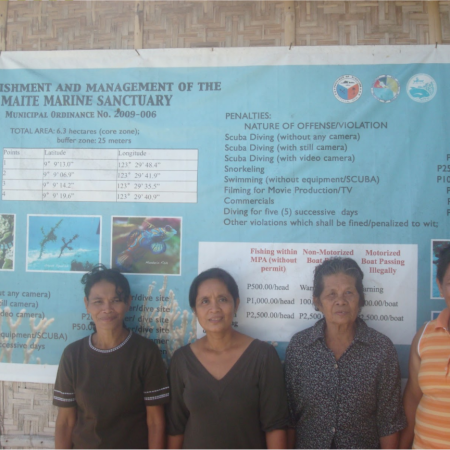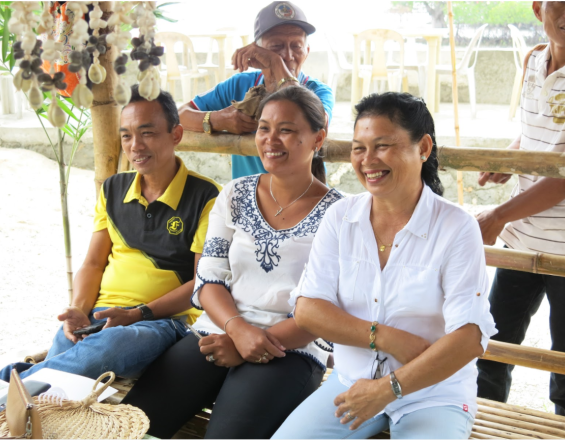En la cogobernanza de las AMP, definir quién participa de la comunidad limitará o posibilitará el éxito a largo plazo. Las mujeres y los hombres tienen distintos papeles, prioridades, necesidades y conocimientos en torno a la gestión de los recursos costeros y, por tanto, aportarán ideas diferentes y obtendrán beneficios distintos de la gestión de las AMP. Las personas de todos los sexos, independientemente de si obtienen ingresos directos de la pesca o no, deberían participar por igual en las oportunidades de capacitación y gestión de las AMP para captar plenamente las necesidades y prioridades de la comunidad y fomentar un amplio apoyo comunitario.
Factores facilitadores
La existencia de una comunidad que se proponga vigilar y hacer cumplir las restricciones pesqueras de una AMP es esencial para el éxito. Las mujeres y los hombres, en sus distintas funciones, pueden ayudar a difundir información sobre las políticas y a hacerlas cumplir, y contribuirán a llegar a una comunidad más amplia. Además, el apoyo de las organizaciones donantes que valoran la inclusión de las mujeres y comprenden la dinámica de género local puede ayudar a fomentar un cambio de los estereotipos de género y garantizar la inclusión de mujeres y hombres por igual.
Lección aprendida
Algunas comunidades de Filipinas tienen AMP desde los años 70, y muchas de ellas se establecieron sólo con pescadores varones. Esto significa que existen estereotipos y tradiciones locales muy arraigados que impiden la participación de las mujeres. En el caso de Caticugan, estos estereotipos crearon importantes barreras a la participación formal de las mujeres en la gestión de las AMP, lo que limitó sus ingresos y oportunidades de empoderamiento. Por el contrario, en Maite y Bino-ongan las mujeres estuvieron presentes y a menudo lideraron iniciativas y la gestión de las AMP, lo que dio lugar a nuevas oportunidades de generación de ingresos y a una conservación eficaz de los recursos del ecosistema. Dado que las AMP siguen contando con el apoyo de ONG mundiales y se financian con ayudas extranjeras, los marcos de evaluación utilizados deben integrar la igualdad de género para valorar plenamente las actuales lagunas en la participación de las mujeres. Si un plan de financiación y un marco de evaluación no incluyen la igualdad de género, es menos probable que las mujeres cuyas vidas se verán afectadas apoyen la gestión.


